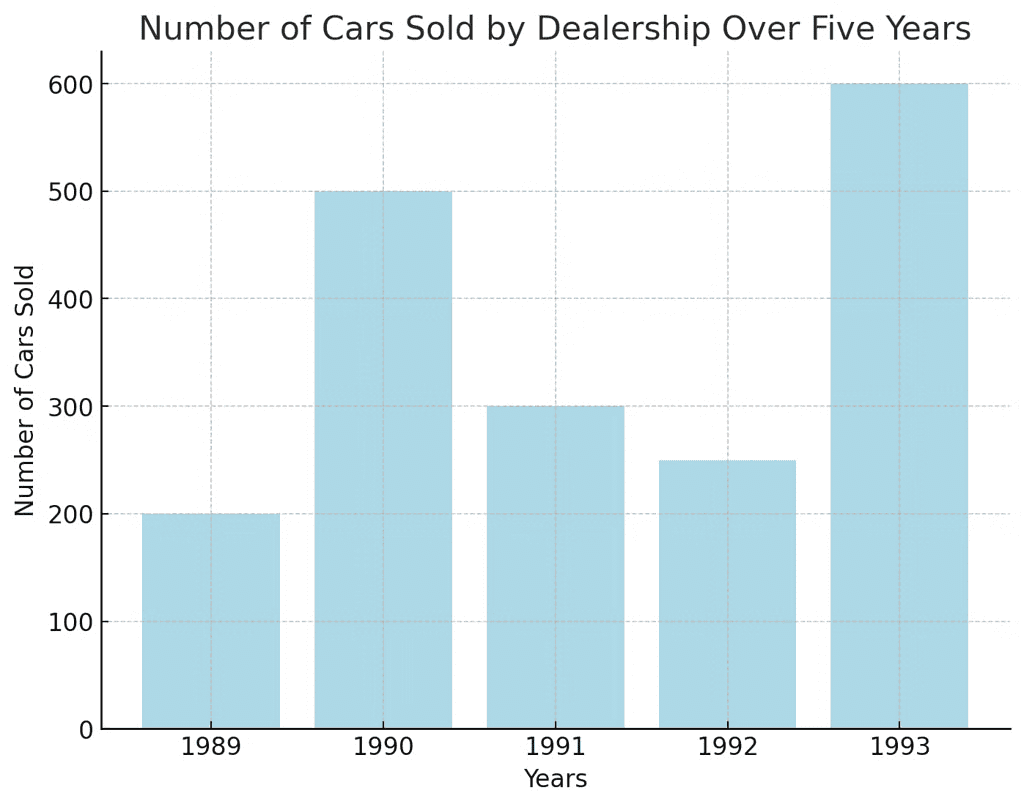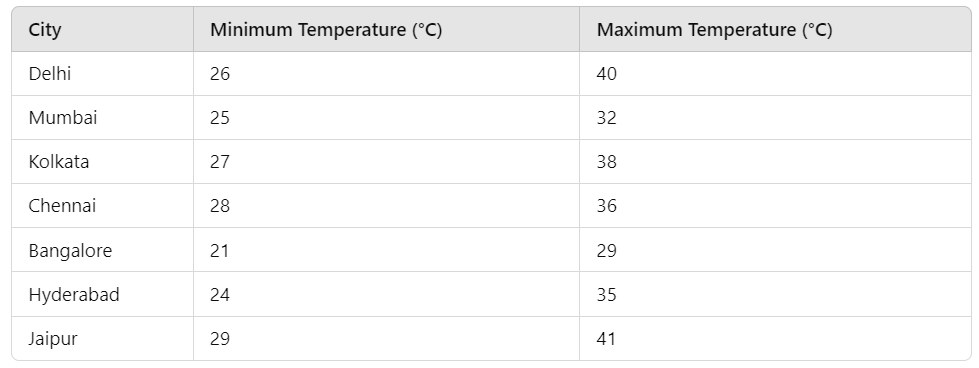Time: 1 hour
M.M. 30
Attempt all questions.
Question numbers 1 to 5 carry 1 mark each.
Question numbers 6 to 8 carry 2 marks each.
Question numbers 9 to 11 carry 3 marks each.
Question number 12 & 13 carry 5 marks each
Q1: What is the arithmetic mean of the numbers 4, 8, and 12? (1 Mark)
(i) 6
(ii) 8
(iii) 10
(iv) 12
Q2: The following bar graph represents the number of students in five different classes:(1 Mark)
 Which class has the highest number of students, and how many more students does it have than the class with the least number of students?
Which class has the highest number of students, and how many more students does it have than the class with the least number of students?
a) Class 1, 20 more students
b) Class 3, 20 more students
c) Class 3, 10 more students
d) Class 2, 15 more students
Q3: If the range of data is 25 and the smallest value is 12, what is the largest value? (1 Mark)
(i) 25
(ii) 37
(iii) 12
(iv) 50
Q4: True or False: The mode is always one of the numbers in the data. (1 Mark)
Q5: What is the mode of the data set 3, 5, 6, 7, 3, 8, 9, 3? (1 Mark)
(i) 3
(ii) 5
(iii) 6
(iv) 7
Q6: Define the following terms: (i) Observations (ii) Data (iii) Frequency of an observation (iv) Frequency distribution (2 Marks)
Q7: The heights (in cm) of 5 students are: 150, 160, 145, 155, and 165. What is the range of their heights? (2 Marks)
Q8: Find the median of the following data set: 12, 14, 16, 18, 20, 22, 24. (2 Marks)
Q9: The ages (in years) of 11 players in a football team are as follows: 22, 28, 19, 30, 25, 22, 24, 28, 22, 30, 19
Find the mean, mode, and median of this data. Are the three measures of central tendency the same? (3 Marks)
Q10: Following is the choice of sweets of 30 students of class VI: Ladoo, Barfi, Ladoo, Jalebi, Ladoo, Rasgulla, Jalebi, Ladoo, Barfi, Rasgulla, Ladoo, Jalebi, Jalebi, Rasgulla, Ladoo, Rasgulla, Jalebi, Ladoo, Rasgulla, Ladoo, Rasgulla, Jalebi, Ladoo, Rasgulla, Ladoo, Ladoo, Barfi, Rasgulla. Rasgulla, Ladoo. (3 Marks)
(i) Arrange the names of sweets in a table using tally marks.
(ii) Which sweet is preferred by most of the students?
Q11: The bar graph below shows the number of cars sold by a dealership during five consecutive years.(3 Marks)

(i) How many cars were sold in 1989, 1990, and 1992?
(ii) In which year were around 450 cars sold? About 250 cars sold?
(iii) In which years were fewer than 300 cars sold?
(iv) Explain how you would estimate the number of cars sold in 1989 based on the graph.
Q12: The weights of new born babies (in kg) in a hospital on a particular day are as follows: (5 Marks)
2.3, 2.2, 2.1, 2.7, 2.6, 3.0, 2.5, 2.9, 2.8, 3.1, 2.5, 2.8, 2.7, 2.9, 2.4
(i) Rearrange the weights in descending order.
(ii) Determine the highest weight.
(iii) Determine the lowest weight.
(iv) Determine the range.
(v) How many babies were born on that day?
(vi) How many babies weigh below 2.5 kg?
(vii) How many babies weigh more than 2.8?
(viii) How many babies weigh 2.8 kg?
Q13: The following table provides the minimum and maximum temperatures of various cities on a specific date: (5 Marks)
 Answer the following questions
Answer the following questions
(i) Which city has the largest difference in the minimum and maximum temperature on the given date?
(ii) Which is the hottest city and which is the coldest city?
(iii) Name two cities where the maximum temperature of one was less than the minimum temperature of the other.
(iv) Name the city which has the least difference between its minimum and maximum temperature.
You can find the solutions of this Unit Test here: Unit Test (Solution): Data Handling


 Which class has the highest number of students, and how many more students does it have than the class with the least number of students?
Which class has the highest number of students, and how many more students does it have than the class with the least number of students? Answer the following questions
Answer the following questions















